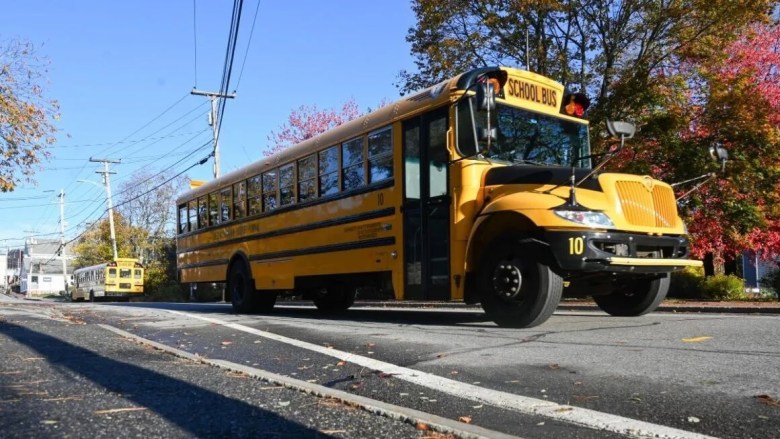Maine, once a national competitor in student achievement, now sits at or below the national average for standardized test performance. While scores nationwide have dropped since the COVID-19 pandemic, Maine student performance has been sliding for more than a decade.
A Maine Monitor analysis of 20 years of student test scores on the National Assessment of Educational Progress (NAEP) revealed that some students are sinking to the bottom faster than others. Low-income students and children with disabilities saw peak test scores on the NAEP starting around 2007. After that, these students began experiencing significant declines.
Between 2007 and 2024, the portion of all Maine students reaching at least a partial, basic level of understanding in reading and math fell by more than 14 percent. However, the declines were much steeper for certain groups. The percentage of students with disabilities reaching this bare-minimum performance level or higher dropped by more than 32 percent in some subjects—and in some cases, more than 40 percent. Low-income students meeting the same level fell by more than 23 percent during the same period.
Overall, the percentage of Maine test takers performing at or above the basic level is lower than the national average. It is important to note that NAEP results are presented only as percentages, not total numbers, and the exact losses in performance vary depending on the subject and grade level.
To ensure accuracy, The Maine Monitor consulted two education researchers who confirmed that children with disabilities and those from low-income households are sliding significantly. Students with disabilities often have individualized plans that provide accommodations for learning and may include conditions such as autism and dyslexia. Economically disadvantaged students are defined as those from low-income households, homeless children, or those who qualify for programs such as free and reduced-price lunch.
Other groups have been struggling as well. Black students and English language learners have seen significant losses in test scores, although data collection for both groups has been inconsistent over the years due to their relatively small populations in Maine.
NAEP categorizes student performance into four levels:
– **Below Basic:** Students cannot demonstrate even fundamental knowledge in reading or math.
– **Basic:** Students show partial, but not complete, understanding of grade-level skills. For example, fourth graders meeting the basic level in reading can make simple inferences from text, and eighth graders can answer specific questions about the text.
– **Proficient:** Considered the goal for all student performance by the National Assessment Governing Board, this level indicates a solid understanding of challenging math and reading skills.
– **Advanced:** Students have mastered math and reading skills beyond the proficient level.
Maine saw its percentage of students performing at the proficient level begin to decline between 2013 and 2017 across grade levels and subjects. Meanwhile, the proportion of students performing at the advanced level has remained fairly consistent over time, typically between 2 and 10 percent across grade levels and subjects.
Unfortunately, the percentage of students performing below the basic level has been growing since 2007. For instance, about 59 percent of fourth graders with disabilities tested below basic in reading in 2007; by 2024, that number had risen to roughly 78 percent. Similarly, 41 percent of low-income fourth graders tested below basic in 2007, increasing to 59 percent by 2024.
These trends highlight growing challenges in educational equity and achievement in Maine, especially among vulnerable student populations. Addressing these issues will be critical to improving outcomes for all students in the state.
https://www.centralmaine.com/2025/10/27/these-maine-students-are-sinking-to-the-bottom/

Be First to Comment